Augite, Biotite, Calcite, Muscovite, Olivine, Orthoclase, Plagioclase, Igneous Rocks, Sedimentary Rocks, Metamorphic Rocks, Fossils
This glossary gives information about the common rock-forming minerals, major rock types and some of the fossils that you may encounter in common building stones.
Minerals are naturally occurring chemical elements or compounds with a specific composition enabling them to be classified according to their chemical group (e.g. silicate) or family name (e.g. quartz).
Major rock types
The main classification of crustal rocks is based on their origin:
Fossils are the evidence of once-living animals and plants that may be either the preserved remains of an organism, such as body fossils, or evidence of activity, such as trace fossils.
Minerals
Minerals are naturally occurring chemical elements or compounds with a specific composition enabling them to be classified according to their chemical group (e.g. silicate) or family name (e.g. quartz). Each mineral therefore, can be determined by its particular physical and chemical properties, some having scientific and industrial importance. By studying mineral properties such as cleavage, hardness and specific gravity, geologists can discover how the mineral was formed and use them, along with colour and habit, to identify minerals. Information about some of the major rock-forming minerals can be found on this site. For each mineral described, extra information is given in the fact box at the bottom of each page. These give details about the family name, chemical group and a number of characteristics or properties that can aid identification.
For further information about mineral properties you may find the following links useful:
Augite
(Ca,Mg,Fe,Al)2(Al,Si)2O6 Chemical Group: Silicate
Augite is the commonest pyroxene and occurring widely in igneous rocks. It is dark green to black, although weathered specimens may look faded. It forms prismatic crystals in volcanic rocks and longer flat crystals in basic dykes and sills such as dolerites.
RYSTAL
SYSTEM | COLOUR | MOH'S
HARDNESS | SPECIFIC
GRAVITY | LUSTRE |
| Monoclinic | Black to greenish-black | 5 - 6 | 3.2 - 3.5 | Vitreous to resinous |
Biotite
K(Mg,Fe)3(Al,Fe)Si3O10(OH,F)2 Chemical Group: Silicate
Biotite is an important constituent of many igneous rocks like granite, diorite and andesite. It is also a rock forming mineral in metamorphic rocks like gniess, schist and hornfels. In felsic and intermediate igneous rocks biotite may be confused with amphibole but biotite has flat, slick, shiny faces not broken by the numerous cleavages typical of amphibole.
CRYSTAL
SYSTEM | COLOUR | MOH'S
HARDNESS | SPECIFIC
GRAVITY | LUSTRE |
| Monoclinic | Black to greenish-black | 5 - 6 | 3.2 - 3.5 | Vitreous to resinous |
Calcite
CaCO3 Chemical Group: Silicate
Calcite is the principal component of limestones, marble and other calcareous sedimentary rocks. The calcite in limestones may originate as an accumulation of shells or as a precipitate. It is also a common gangue mineral in hydrothermal veins. Calcite can be mistaken for quartz but a simple test of hardness can distinguish the two. Quartz has a hardness of 7 but calcite is only 3 and can be scratched by a coin. Calcite can also be determined by testing with dilute hydrochloric acid, a small drop will dissolve and effervesces readily.
CRYSTAL
SYSTEM | COLOUR | MOH'S
HARDNESS | SPECIFIC
GRAVITY | LUSTRE |
| Trigonal | Colourless | 3 | 2.7 | Vitreous |
Muscovite
KAl2(Si3Al)O10(OH)2 Chemical Group: Silicate
Muscovite occurs in igneous rocks such as granite and pegmatite. It occurs widely in metamorphic rocks like gneiss and mica-schist. It is also a common mineral resistant to weathering and occurs in sedimentary rocks.
The first window panes were made of muscovite ('muscovy glass') and it is still used today in oil lamps and stoves because of its resistance heat.
CRYSTAL
SYSTEM | COLOUR | MOH'S
HARDNESS | SPECIFIC
GRAVITY | LUSTRE |
| Monoclinic | Usually colourless | 2 - 3 | 2.8 - 2.9 | Pearly |
Olivine
(Mg,Fe)2SiO4 Chemical Group: Silicate
Olivine is a rock-forming mineral, and occurs in igneous rocks with low silica, such as a gabbro, basalt, or dolerite. This is a relatively rare mineral in most igneous rocks, or one that is hard to see without a microscope. Large accumulations form the igneous rock dunite or, when mixed with pyroxene, peridotite. Olivine is rare as a detrital mineral - on Earth* - owing to its low stability in sedimentary environments. Forsterite can occur in metamorphic marble. Fayalite is dark brown or black; it is uncommon but can occur in granite pegmatites.
*Olivine appears to be stable as a detrital mineral under the cold, dry conditions at the surface of Mars.
CRYSTAL
SYSTEM | COLOUR | MOH'S
HARDNESS | SPECIFIC
GRAVITY | LUSTRE |
| Orthorhombic | Olive green | 6.5 - 7 | 3.27 - 4.20 | Vitreous |
Orthoclase
KAlSi3O8 Chemical Group: Silicate
Orthoclase is a typical feldspar that is the dominant mineral in coarse-grained silica-rich igneous rocks like granite and syenite. It can also form particularly large crystals in pegmatites. Common in many metamorphic rocks, it also occurs to a lesser extent in sedimentary rocks.
In igneous rocks orthoclase is common and may sometimes, when white, be confused with Na-plagioclase.
CRYSTAL
SYSTEM | COLOUR | MOH'S
HARDNESS | SPECIFIC
GRAVITY | LUSTRE |
| Monoclinic | White or pink | 6 | 2.53 - 2.56 | Vitreous to pearly |
Plagioclase
CaAl2Si2O8 - NaAlSi3O8 Chemical Group: Silicate
The feldspar crystal structure is complex but consists of rings of four tetrahedra strung into chains and held together ionically by metallic cations. The specific cations determine the particular variety of feldspar obtained.
Plagioclase is an important rock-forming mineral and occurs widely, primarily in igneous rocks such as basalts. It can sometimes be confused with alkali feldspars (such as orthoclase) but can be distinguished by striations on the cleavage surfaces caused by the intersection of lamellar twins with the cleavage surface.
CRYSTAL
SYSTEM | COLOUR | MOH'S
HARDNESS | SPECIFIC
GRAVITY | LUSTRE |
| Triclinic | Greyish-white to pink | 6 - 6.5 | 2.6 - 2.8 | Vitreous |
Quartz
SiO2 Chemical Group: Silicate
In rocks, quartz often appears light grey to almost black. It occurs widely in silica rich igneous rocks like granite. It is very resistant to weathering due to its hardness and accumulates in sands as well as in sedimentary rocks like sandstone. It is widely distributed in metamorphic rocks like gneiss and quartzite. Quartz also occurs as a prominent matrix mineral in hydrothermal veins.
There are many varieties of quartz, due to its different colours and forms, for example, rose quartz is pink in colour and amethyst is purple. These attractive varieties are often used in jewellery and for ornaments. Quartz is also used in glass-making, ceramics, building materials and abrasives.
CRYSTAL
SYSTEM | COLOUR | MOH'S
HARDNESS | SPECIFIC
GRAVITY | LUSTRE |
| Trigonal | Various | 7 | 2.65 | Vitreous |
Igneous Rocks
Igneous rocks form by direct crystallization of minerals from a molten magma. When this magma cools slowly beneath the surface of the Earth, coarse-grained intrusive (plutonic) rocks crystallize: extrusive (volcanic and pyroclastic) rocks which crystallize quickly after the magma erupts at the earth's surface are typically very fine-grained. If the melt cools too quickly for crystals to grow, the result is a 'glass'.
Igneous rocks are classified according to their silica (SiO2) content. Expressed as a percentage of silica, four categories of igneous rocks exist; acid* (>66%), intermediate (52-66%), basic (44-52%) and ultrabasic (<44%).
*Not to be confused with acidity in the sense of pH.
Basalt
Basalt is one of the most common igneous rocks and is major constituent of the upper layer of the ocean floors (usually as pillow lava), and hot spot volcanoes (such as the Hawaiian islands). It is a finely crystalline basic volcanic rock which is sometimes glassy. It is recognized primarily by its dark colour and are essentially composed of plagioclase feldspar and pyroxene. Vesicular varieties are typically terrestrial, forming either on volcanic islands or on the continents. When cooled slowly it forms larger crystals and called dolerite or gabbro.| Colour: | black, very dark grey; paler and greenish or reddish if altered. |
| Mineralogy: | essential plagioclase and pyroxene in variable amounts, with olivine, spinel, ilmenite, magnetite or apatite. |
| Classification: | basic igneous rock. |
| Occurrence: | widespread, seafloor crust, oceanic islands, continental volcanoes and flood plateau lavas. |
| Texture: | usually large crystals (phenocrysts) set in finely crystalline matrix, may have vesicles (air pockets). |
| Structure: | commonly vesicular or amygdaloidal, filled with zeolites, carbonates or sililca. May form columnarjoints on cooling, surafce forms of lava may be rough and clinkery (aa) or have a ropy appearance (pahoehoe). |
Gabbro
Gabbro is a dark, medium- to coarse-grained intrusive igneous rock composed of calcium plagioclase, pyroxene, and minor olivine, but no quartz. It is the intrusive equivalent of a basalt. Gabbros are often used as facing stones on buildings, especially the attractive dark varieties, but it is too fragile to make a good construction material. | Colour: | dark grey, greenish, brownish. |
| Mineralogy: | essential plagioclase and pyroxene, other minerals include olivine, hornblende, spinel, ilmenite, magnetite, apatite. |
| Classification: | basic plutonic igneous rock. |
| Occurrence: | deeper continental crust, widespread. |
| Texture: | course grained, granitic texture, crystals intergrown; may have lath like crystals of feldspar aligned parallel to layering. |
| Structure: | commonly layered, may show alternating light (feldspar rich) and dark (pyroxene and/or olivine) layers. |
Granite
Granites are coarse-grained rocks with a mottled appearance. They comprise a mixture of glassy quartz, white, pink or red alkali feldspar, minor amounts of dark minerals, and often white, sodic plagioclase. Their low density and resistance to weathering means that they usually form high, rugged terrains. Quarrymen use the term granite for almost any hard rock. Geologists use it either in a restricted sense, or as a blanket term for granitoids of acid or intermediate composition. Their complex and varied origins give rise to a great variety of types. Weather-resistant stones are polished for use as decorative facings on buildings. Granites that weather to pure kaolin provide china clay. Left: This granite is a biotite granite with a black and white appearance. It contains milky-white orthoclase and white plagioclase. There is grey coloured quartz and approximately 10% biotite. This granite, from the South-West of England, is often used as a decorative building stone because it is hard and crystalline.
Right: This specimen from the Shap area in North-West England is an example of a pink granite. It has an equigranular texture with much pink orthoclase, grey quartz and biotite.
| Colour: | colourless grains, also mottled in white, pink or red, some grey or dark grains. |
| Mineralogy: | essential quartz, alkali feldspar and plagioclase in variable amounts, usually with hornblende and/or biotite; muscovite may occur. |
| Classification: | acid plutonic igneous rock. |
| Occurrence: | intrusive, most commonly occurring in batholiths. |
| Texture: | coarse to very coarse-grained; usually granular; may be porphyritic with well-shaped phenocrysts (large crystals) of feldspar; sometimes foliated; coarse intergrowths of quartz and feldspars can form a 組raphic� texture. |
| Structure: | commonly contain xenoliths, may contain cavities (druses) into which well-formed crystals project; may be associated with much late-stage mineralization. |
| Examples: | Shap granite, Cornish Granite (below) |
Obsidian
Obsidian is often referred to as volcanic glass, that has cooled too quickly for crystals to form. It is a silica-rich natural glass and typically is very black, shiny, glassy, with conchoidal fracture (smooth curved breaks, often with concentric ridges). Obsidian occurs as crusts on lavas, as complete flows or as near surface volcanic domes. Obsidian may be red-brown due to the presence of iron. Its conchoidal fracture can produce very sharp edges and its use for knives and arrows makes it an important archaeological material.| Colour: | black, dark colours. |
| Mineralogy: | essential glass, other minerals can include alkali feldspar, quartz. |
| Classification: | intermediate/ acid igneous rock. |
| Occurrence: | not widely distributed although locally common. |
| Texture: | none; massive glass with conchodial fracture. |
| Structure: | glass may contain spherical bodies (spherulites), may be spotted or show flow banding. |
Volcanic Ash and Tuff
Volcanic ash is a pyroclastic rock, composed of fine grains less than 2mm in diameter. Pyroclastic means ‘fire-broken’, a name for rocks that have been blown apart by exploding gases. Ash exploded out of a volcano, may fall through the air and settle in beds, called ash-falls when unconsolidated, or tuffs when consolidated. The ash can vary in composition, for example it may be made up entirely of rock fragments.| Colour: | white or grey powder when newly fallen. |
| Composition: | ash-fall tuffs composed of a mixture of rock fragments, crystals and glass shards. |
| Classification: | pyroclastic igneous rock. |
| Occurrence: | associated with explosive volcanic activity, particle size decreases away from the vent because lighter ash is carried further by the wind. |
| Texture: | fine-grained, less than 2mm. |
| Structure: | ash-fall tuffs are often well-bedded. |
Sedimentary Rocks
About 75% of the Earth’s continental crust is covered by sedimentary rocks. Sedimentary rocks form from pre-existing rock particles - igneous, metamorphic or sedimentary. The parent rock undergoes weathering by chemical and/or physical mechanisms into smaller particles. These particles are transported by ice, air or water. Deposition takes place as a result of a lowering of energy, organic biochemical activity or chemical changes.
Once deposited, the sediments, over time, are lithified (turned into rock) through compaction (decrease in rock volume due to the weight of overlying sediment) and cementation (chemical precipitation in pore spaces between grains which "glues" the rock together). The primary mineralogical and textural characteristics of the rock can be modified as the sediments are buried deeper in the earth's crust and undergo an increase in both temperature and pressure. These low-pressure, low-temperature changes are termed diagenesis.
Clays, Mudstones and Shales
The finest grained detrital rocks are soft, plastic clays which occur only in young formations. The particles are invisible to the naked eye and clay feels smooth when worked. Shales are finely laminated or bedded rocks that split into fine layers, whereas mudstones are well consolidated.
These rocks accumulate in the deepest parts of lakes and seas where the gentlest water movements can transport the smallest particles.| Colour: | various. |
| Mineralogy: | mainly clay minerals and detrital quartz, feldspar and micas. |
| Occurrence: | often in association with limestones and sandstones as part of repeating cycles, reflecting rising and falling sea levels, shallow and deep water environments. |
| Texture: | very fine-grained, less than 0.004mm. |
| Structure: | fine bedded in shales, may see small sedimentary structures and disturbances left by organisms. |
Limestones
Limestone is a sedimentary rock comprising at least 80% calcium carbonate (CaCO3). Limestones can be deposited in both marine and fresh water environments, the former being more common, and can take many forms such as those described below.
CHALK
Chalk is a pure, soft, well-jointed limestone composed primarily of the calcareous remains of micro-organisms called coccoliths and foraminifera. Pure white chalk contains more than 90% CaCO3 and is usually found in thick beds. In Britain it stretches from Yorkshire down to the famous cliffs of Dover. These where deposited in the Cretaceous (~100 million years ago) when Britain was submerged under a deep sea.| Colour: | white, grey or yellow. |
| Mineralogy: | mainly calcite |
| Occurrence: | chalks are pelagic limestones formed in shallow, open seas. |
| Texture: | fine grained and finely porous. |
| Structure: | usually well bedded in thick extensive successions, nodules of flint and marcasite are common |
SHELLY LIMESTONE
Fossiliferous limestones consist of a large number of fossils held together mainly in a calcite cement.Carboniferous limestone is an example of a shelly limestone and is found predominantly in the Peak District and Yorkshire Dales where it forms a distinctive landscape known as karst. The limestone was deposited in the Carboniferous period, over 300 million years ago, and tells us that Britain once lay in warmer latitudes. This tropical environment was similar to the Caribbean of today with lots of algae, corals, and brachiopods.
| Colour: | variable. |
| Mineralogy: | finely divided calcite mud containing larger crystals from animal skeletons. |
| Composition: | calcareous. |
| Occurrence: | widely distributed. |
| Texture: | variable. |
| Structure: | bedding often apparent, the fossils may be complete or fragments. |
OOLITIC LIMESTONE
Oolitic limestone is a carbonate rock made up mostly of ooliths (or ooids) which are sand-sized carbonate particles that have concentric rings of CaCO3. These rings are formed around grains of sand or shell fragments that were rolled around on the shallow sea floor, gathering layer after layer of limestone.Portland limestone is an example of an oolitic limestone. This limestone formed in a shallow sea, rather like the modern Bahamas, near the end of the Jurassic period (~135 million years ago). The rock has an even structure rather like cod roe and it can therefore be cut or sculpted in any direction. This feature, coupled with hardness, colour and durability, gives the limestone its quality as a building stone.
To find out more to do with Portland limestone and how it was once quarried and how it has been used please see the Jurassic Coast website
| Colour: | white, grey or yellow. |
| Mineralogy: | mainly calcite |
| Occurrence: | chalks are pelagic limestones formed in shallow, open seas. |
| Texture: | fine grained and finely porous. |
| Structure: | usually well bedded in thick extensive successions, nodules of flint and marcasite are common |
Sandstone
Sandstones form a large proportion of sedimentary rocks around the world. They are formed by the cementing together of grains. Sandstones can vary enormously in colour, texture and composition depending on the nature of the original source material and the environment of deposition.| Colour: | variable. |
| Mineralogy: | a wide variety of rock fragments with up to 75% quartz grains. |
| Occurrence: | associated with most other sedimentary rock types. |
| Texture: | medium-grained; may range widely in degrees of grain sorting and shape. |
| Structure: | bedding is often apparent along with sedimentary structures and fossils. |
Metamorphic Rocks
These rocks get their name from the Greek words ‘meta’ and ‘morph’, meaning ‘change of form’. Metamorphic rocks are produced by the alteration of pre-formed rocks by pressure, temperature and migrating fluids, often in environments deep in the Earth’s crust. Because of the severe conditions which rocks undergo during metamorphism, the original minerals may become unstable and change to maintain equilibrium with the new environment. This can involve changes in mineralogy (recrystallization of existing minerals or formation of new ones) and usually changes in texture from the original rock.
Three main types of metamorphism are recognized. Regional metamorphism results from mountain-building events with large scale folding and burial of pre-formed rocks. Contact metamorphism is produced by direct heating of rocks around an igneous intrusion, baking the surrounding country rocks. Dynamic metamorphism occurs where large scale faulting breaks and deforms rocks next to the fault.
Gneiss
Gneiss is a rock formed during regional metamorphism. It is generally a coarse-grained granular textured rock which can develop from a wide variety of igneous and sedimentary material. Gneisses consist of alternating dark and light bands of minerals which can vary in thickness, from millimetres up to a metre and can be highly contorted. Varieties are distinguished by characteristic minerals, texture, structure or the parent rock.| Colour: | commonly formed of alternating dark and light (white,pink or grey) bands. |
| Mineralogy: | quartz and feldspar, may contain biotite mica. |
| Composition: | varied, may be igneous or sedimentary. |
| Texture: | medium-to coarse grained. |
Marble
Marble is a metamorphic rock, formed by the alteration of limestone under high temperature and/or high pressure. Marbles formed from pure calcite limestones are white, with a sugary texture, and they effervesce when tested with dilute (~10%) hydrochloric acid. Impurities in the limestone may lead to the formation of new minerals, giving the marble a variety of colours. Stonemasons often give the name marble to any rock that takes a good polish, but this is incorrect in geological terminology.A famous white marble comes from Carrara in the Italian Appenines where it has been quarried for two thousand years. It is probably the finest in the world for sculpture, and has been used by famous sculptors such as Donatello, Michelangelo and Canova for their masterpieces. The Taj Mahal in India is built of white marble from Makrana.
| Colour: | may be uniformly white and glistening, light brown or grey; also variegated with green, red or black. |
| Mineralogy: | 95% calcite (CaCO3) or dolomite Ca,Mg(CO3)2. Impurities may give rise to new minerals such as olivine. |
| Composition: | calcareous. |
| Texture: | medium to coarse grained, often showing a sugary texture. |
Quartzite
Quartzites are formed through the metamorphism of quartz-rich sandstones. They are formed mostly of the mineral quartz. Quartzite may sometimes look like marble, but can be distinguished because quartzite cannot be scratched with a knife, unlike marble. Nor does it react with weak acid, as does marble. It is very hard and weather resistant. Quartzite is used in the glass and ceramic industries, and builders sometimes use it for flooring and facing.| Colour: | white, grey or reddish. |
| Mineralogy: | mostly quartz, may contain some feldspar or mica. |
| Composition: | siliceous. |
| Texture: | medium-grained, grains equidimensional. |
Schist
Schist is often of silvery appearance, and it shows a tendency to split into sheets, although not nearly as well as the finer grained slate. It is rich in the silvery-white mineral mica, which is platy in shape itself. The micas are arranged roughly parallel to each other, which is why the rock shows this tendency to split, a phenomenon known as slatey cleavage in slates, and as schistosity in coarser grained rocks such as schist.This rock type is very widespread in metamorphic regions, such as Scotland, Norway or the Alps.
| Colour: | greyish and sparkling, white grains of quartz may be visible. |
| Mineralogy: | white mica (muscovite) and black mica (biotite) common, also quartz. It may contain other minerals as well, such as garnet, which form as the rock undergoes metamorphism. |
| Texture: | umedium or coarse-grained, may contain new minerals of larger size then the matrix, known as porphyroblasts (e.g. garnet, kyanite). Characterized by schistosity, may show folding of layers. |
Slate
Slate is a metamorphic rock formed from a mudstone or shale. Its main characteristic is that it splits very easily into very thin sheets, a property known as cleavage. This is caused by the alignment of the very fine grains that form the slate, particularly the platy mineral mica, when the rock is metamorphosed under moderate temperatures and quite high pressures.Slate was commonly used a roofing material on old houses because it splits so readily. Slates from the quarries of North Wales were once widely used for roofing in Britain. Slate was also used for billiard tables and blackboards, and decorative fireplaces made from enamelled slate can sometimes be found in nineteenth Century houses. Nowadays, it is rare to see a new slate roof, probably because alternative materials are cheaper.
| Colour: | mostly grey to black, but may be purplish or greenish. |
| Mineralogy: | micas, quartz, chlorite and graphite. |
| Composition: | pelitic. |
| Texture: | fine-grained, grains too small to see with the naked eye, alignment of minerals leads to a very well developed cleavage. |
Fossils
WHAT IS A FOSSIL? The word fossil is derived from the Latin ‘fossilis’ meaning, an object that has been dug up from the ground. Fossils are the evidence of once-living animals and plants that may be either the preserved remains of an organism, such as body fossils, or evidence of activity, such as trace fossils. They range from tiny plants and animals that can only be seen under a microscope to huge skeletons of dinosaurs.
Body fossils are the remains of living organisms and are direct evidence of past life. Usually only hard tissues are preserved, for example shells, bones, teeth or wood. Trace fossils are the preserved impressions of biological activity. They provide indirect evidence for the existence of past life. They are the only indictors of fossil behavior.
Corals
Corals are some of the most colourful animals in the sea. Most corals live in warm, shallow, tropical seas and feed on plankton. The oldest fossil corals are from the Ordovican period, over 450 million years ago.Corals are marine animals with a sac-like body (polyp), mouth, tentacles and skeleton. It is the skeleton that survives in the fossil record. They may be solitary (living by themselves) or colonial (many polyps joined together).
There are three main coral groups, two groups are extint, Rugosa and Tabulata; the Scleractinia can still be found in the oceans today. Coral reefs are inhabited by countless animals and are the most diverse marine environments.
Brachiopoda
Brachiopods, on first inspection, can be very similar to bivalves; both have a hinged shell enclosing their soft tissues. But brachiopod valves are different sizes and are symmetrical about a medial plane bisecting the shell from the mid-point of the hinge down. The pedicle valve, is generally larger and has a hole at one end from which extends the fleshy stalk, the pedicle, with which the animal anchors itself to the sea-bed. The smaller brachial valve contains the lophophore, an organ unique to this group used for filtering food out of the water.These organisms are easily preserved in limestones and shales, especially those that formed on the extensive continental shelves.
Spirifer, such as those shown above, can reach up to 12cm in width when adult. The hinge line is very distinctive, being wide and straight. Spirifer has a world-wide distribution.
Echinoderms
Echinoderms are a very distinct group of animals which all live in the sea. Sea-urchins (echinoids), sea-lilies (crinoids), starfish (asteroids) and brittlestars (ophiuroids) all belong to this group. The distinguishing feature of most echinoderms is their five-fold radial symmetry.Echinoderms are often fossilized because their skeletons are made of resistant calcite. They have a long fossil record and are known as far back as the Cambrian period (~500 million years ago).
Crinoids (like the ones shown on the right) are common fossils and their broken remains build great masses of limestone, for example the Carboniferous Limestone. Because of their delicate structure, crinoids are rarely found entirely preserved. They live in shallow water, attached to the substrate with their arms outstretched, perpendicular to the water flow. They intercept food particles and pass them into food grooves that lead to the mouth. A small number of crinoid species have survived to the present day.
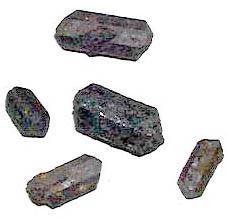
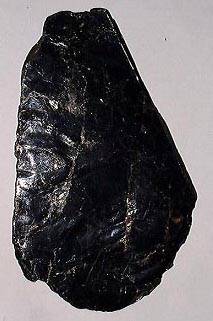
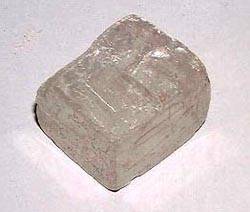
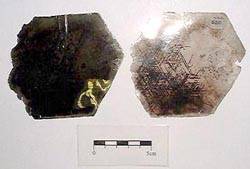
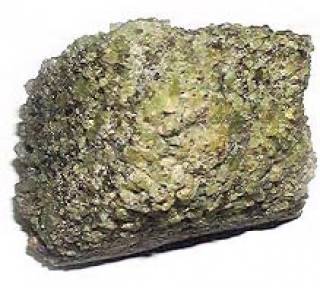
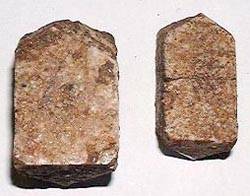
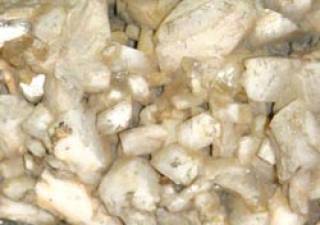
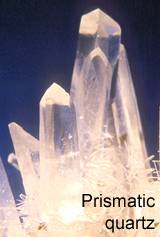
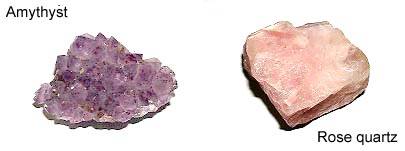
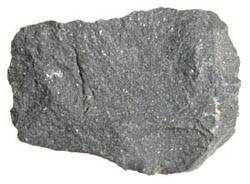
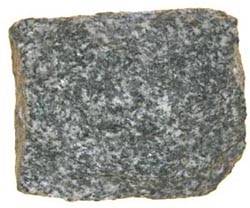
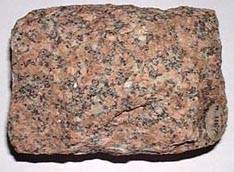
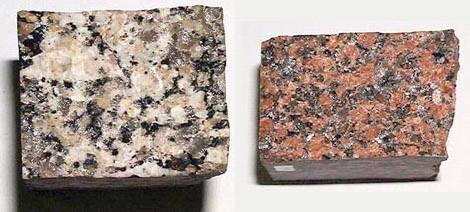
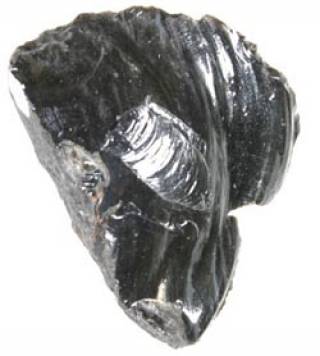
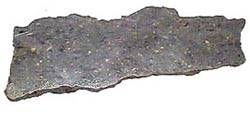
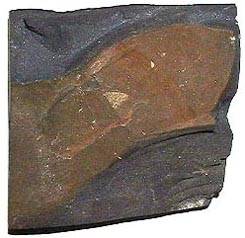
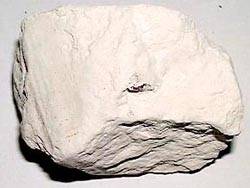
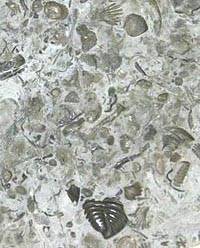
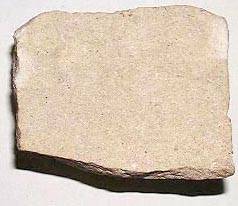
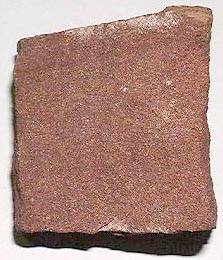

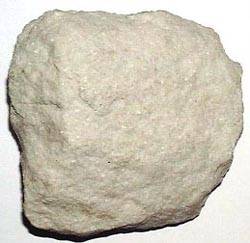
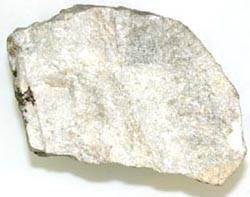
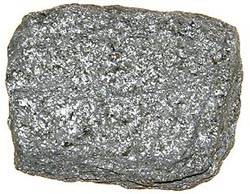
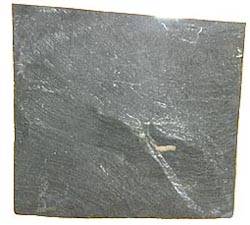
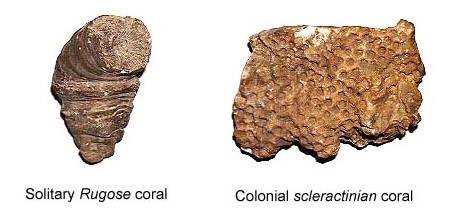
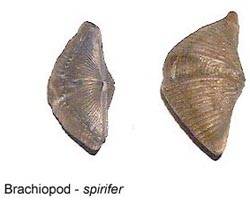
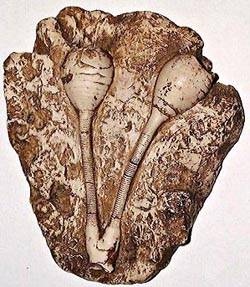
 Close
Close

